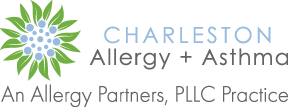Have you adopted regular exercise into your daily routine? For many, this simple lifestyle change can have incredible benefits – reduced stress, improved cardiovascular health, weight management and more. However, for those living with exercise-induced anaphylaxis (EIA), this healthy activity can be accompanied by severe consequences.
Understanding Anaphylaxis
To comprehend EIA, it’s essential to understand the definition of anaphylaxis. This severe and potentially life-threatening allergic reaction occurs within seconds or minutes of exposure to an allergen and affects approximately one in 50 Americans. Symptoms between both types are relatively similar, but the cause of symptoms makes the distinction.
Exercise-Induced Anaphylaxis Explained
As its name suggests, exercise-induced anaphylaxis is a unique subtype of anaphylaxis strictly triggered by physical activity. The symptoms of EIA typically arise during or shortly after exercise and may range in severity.
Unraveling the Cause
The exact mechanism underlying EIA is still being researched, but several hypotheses have been proposed. One study published in the Journal of Allergy and Clinical Immunology found that in 30% to 50% of cases, eating before exercise was associated with flare-ups. Common dietary triggers include wheat, shellfish, dairy products and nuts.
Another study Another study suggests that blood flow is redirected from the gastrointestinal tract to the muscles during exercise, potentially reducing the gut’s ability to absorb allergenic proteins. These undigested proteins are then ushered into the bloodstream, triggering an allergic response.
Furthermore, others have explored the role of mast cells in exercise-induced anaphylaxis. Mast cells, which are key players in allergic reactions, may be activated during exercise, releasing histamine and other inflammatory mediators.
Identifying Symptoms of EIA
Recognizing the symptoms of exercise-induced anaphylaxis is crucial for timely intervention. Common symptoms of EIA include:
- Skin Reactions: Hives, itching and flushed or pale skin
- Respiratory Symptoms: Wheezing, shortness of breath, coughing and throat tightness
- Gastrointestinal Distress: Nausea, vomiting, abdominal cramps and diarrhea
- Cardiovascular Changes: Drop in blood pressure, dizziness, fainting and an irregular heartbeat
- Anxiety and Confusion: Feelings of apprehension and confusion
Diagnosing Exercise-Induced Anaphylaxis
Due to the severity of EIA, immediate medical attention is a must if you suspect you or someone else is experiencing symptoms. Once you are stable, your board certified allergist will help you conduct a thorough evaluation, including a detailed medical history and allergy testing, to confirm the diagnosis.
Managing Exercise-Induced Anaphylaxis: A Multi-Faceted Approach
Living with EIA doesn’t mean abandoning an active lifestyle. Instead, it requires a comprehensive management plan, which may include the following:
- Identify Trigger Foods: If Food-Dependent Exercise-Induced Anaphylaxis (FDEIA) is diagnosed, keeping a food diary can help pinpoint specific triggers.
- Adopt Precautionary Measures: Exercise with a friend who knows of your condition. Carrying an epinephrine auto-injector (EpiPen) is crucial for immediate treatment in case of flare-ups.
- Modify Exercise Routine: Changing the timing, intensity or duration of exercise may reduce the risk of triggering anaphylaxis. Opting for indoor activities in controlled environments might also be helpful.
- Medication Management: Antihistamines may be prescribed to help manage mild symptoms, but they are not a substitute for epinephrine.
- Stay Hydrated: Proper hydration may be beneficial in reducing the risk of EIA.
Remember, if you suspect you or someone you know is experiencing exercise-induced anaphylaxis, seeking immediate medical attention is critical. Empower yourself with knowledge, stay safe, and embrace the beauty of an active lifestyle!
Let’s work out your ideal allergy treatment plan!
Don’t sweat flare-ups any longer! Charleston Allergy and Asthma’s board-certified allergy and asthma specialists are ready to support you on the road to allergy and asthma relief with allergy testing, personalized treatment plans and immunotherapy treatments. Contact our team to schedule your next allergy appointment.




